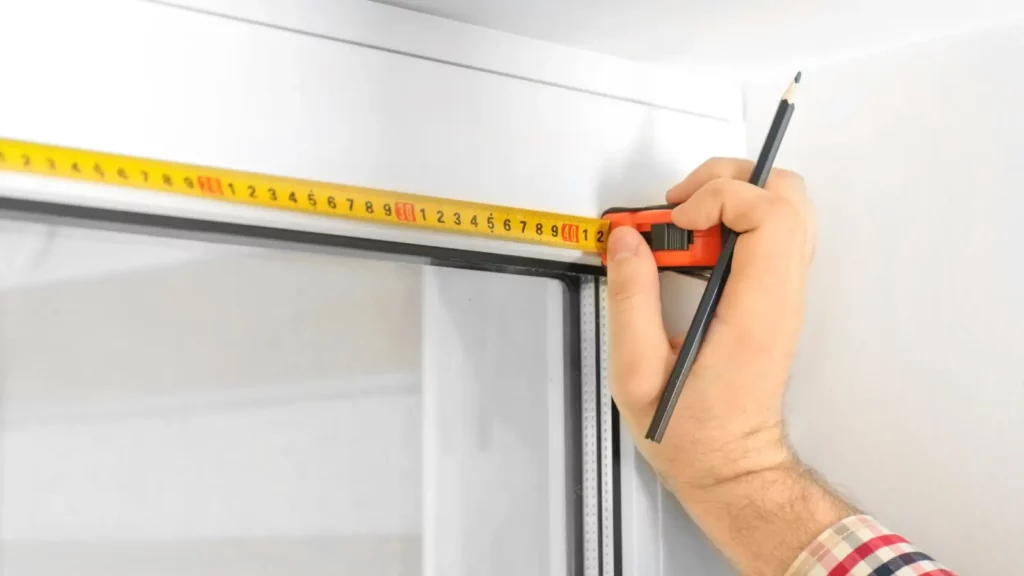What to Do with Old Blinds: Recycling, Reusing & Upcycling

Good news! You got those new blinds you’ve always wanted.
The news is even better if you bought the blinds from Aero Shade. Your new blinds fit perfectly and look oh-so-swank!
But now comes the sticky problem: what to do with the old blinds. Aero Shade will haul away your old blinds (if we installed new ones for you), but what if you did the job DIY? Or bought from a company less conscientious than Aero Shade?
Do you toss the old blinds in the trash? The thought may rankle you if you save every scrap for recycling. Aluminum and vinyl blinds are recyclable (with caveats), but what about wood? Faux wood? Fabric?
You might want to try upcycling and reusing. In this guide, we’ll explain how.
Recycling Vs. Upcycling
Recycling
Recycling is all about turning waste into new materials. Take the example of a soda can. That can is collected from your recycling bin and trucked to a recycling facility. Then it’s melted down to make new aluminum products, using 95% less energy than the process of refining aluminum bauxite ore.
Upcycling
Upcycling turns something old into something new without altering its material composition. Think of it as a more creative form of recycling.
A simple example would be using old t-shirts to create a quilt. The fabric stays the same but is repurposed into something new and valuable.
Upcycling Vs. Reusing
The main difference between reusing and upcycling is the extent of modification and creativity involved.
- Reusing involves using items as they are.
- Upcycling modifies or redesigns something to give it a new purpose, often with an added aesthetic or functional value.
Both practices reduce waste and contribute to sustainability, but upcycling is more creative and transformational.
Vinyl Blinds
Can you recycle old blinds? The answer is yes but with some limitations.
Recycling
As mentioned earlier, vinyl blinds are recyclable. However, most recycling facilities won’t accept them because they’re hard to break down and often contain other materials like cords, plastic parts, and magnets.
Try contacting specialized facilities accepting these materials if you’re determined to recycle your vinyl blinds. They may be able to tell you how to separate the different components for recycling.
Upcycling
If recycling isn’t an option, upcycling is the next best thing. Here are some ideas for repurposing your old vinyl blinds:
- Garden Markers: Cut slats into smaller pieces and use them as markers in your garden.
- Art Projects: Cut slats into different shapes and sizes to create unique art projects or collages.
- Coasters: Cut slats into squares or circles, add felt to the back, and you have DIY coasters.
- Wall Art: Paint over your blinds and use them as a canvas for wall art.
Reusing
- Privacy Screen: Use the slats as a privacy screen on your balcony or patio.
- Draft Stopper: Cut strips of vinyl blind material and use them to create a draft stopper for doors or windows.
- Shelf Liners: Place cut slats in your kitchen or bathroom cabinets to act as shelf liners, making it easier to clean up spills and messes.
Aluminum Blinds
Recycling
Aluminum is highly recyclable. Just make sure to remove any non-aluminum components, like plastic or cords.
Upcycling
- Bird Feeder: Cut slats into smaller pieces and craft them into a bird feeder.
- Garden Trellis: Use the slats to create a trellis for your plants.
- Plant Labels: Cut small pieces and use them as labels for your garden plants.
Reusing
- Reflective Insulation: If you have an attic or garage, cut and place aluminum slats as reflective insulation.
- Protective Covering: Use the slats to cover windows or glass doors during severe weather.
Wood Blinds
Recycling
Wood is a more sustainable material than vinyl, but it’s not always recyclable. Check with local recycling facilities to see if they can and do recycle wood.
Thankfully, wood will decompose in landfills, unlike vinyl. But if you want to avoid contributing to landfill waste, here are some things you can do:
Upcycling
- Picture Frames: Cut slats into different sizes and use them as picture frames.
- Jewelry Organizer: Mount a piece of wood blind on the wall and add hooks or pins to create a jewelry organizer.
- Coasters: Cut slats into squares or circles, sand them down, and add a protective finish for DIY coasters.
- Clothes Rack: Sturdy wood slats with hooks can serve as clothes racks for drying or display.
Reusing
- Firewood: If you have a fireplace or outdoor pit, old wood blinds can kindle the fire or keep it burning.
- Composting: Untreated and unfinished wood blinds can be composted.
Faux Wood Blinds
Recycling
Unfortunately, faux wood blinds are not recyclable. They’re often made with composite materials, making them difficult to break down and recycle.
Upcycling
- Plant Hangers: Cut slats into smaller pieces and use them as hangers for your potted plants.
- Coasters: Similar to wood blinds, cut faux wood slats into squares or circles to create coast
Fabric Blinds
Recycling
Depending on the material, fabric blinds may or may not be recyclable. Check with local recycling facilities to see if they accept fabric for recycling.
If not, here are some upcycling ideas:
Upcycling
- Pillow Covers: Use the fabric from your old blinds to create unique pillow covers.
- Tote Bags: Fashion your old blinds into reusable tote bags for shopping.
- Chair Cushions: Cut and sew fabric blinds into cushions for a fun, patterned accent.
- Quilts: If you have multiple fabric blinds, sew them together to create a one-of-a-kind quilt.
Reusing
- Cleaning Rags: Cut and hem the fabric into smaller pieces for use as cleaning rags.
- Drop Cloth: Use the fabric as a drop cloth for painting or other messy projects.
Conclusion
There’s always a sustainable option for your old blinds — aluminum, vinyl, wood, faux wood, or fabric. It’s all about being creative, resourceful, and committed to reducing waste, one blind at a time. This guide is far from exhaustive — only time and creativity limit the possibilities.
So when you upgrade your blinds, remember to find a sustainable solution for your old ones. Every little effort counts towards a more environmentally friendly future.
FAQs: Recycling & Upcycling Old Blinds
Q: Can all types of old blinds be recycled?
No. It depends on the material and the recycling facilities in your area.
Q: Are there specific recycling facilities that accept old blinds?
Some specialized facilities may accept certain types of blinds for recycling. Contact them directly to ask about their acceptance and recycling processes.
Q: What is the most sustainable option for old blinds?
The best option is to upcycle or repurpose your old blinds rather than dispose of them in landfills. Otherwise, recycling or composting are more sustainable alternatives to disposal.
Q: What parts of the blinds do I need to separate for recycling?
Remove non-recyclable components like cords or plastic. However, some facilities can separate and recycle these materials for you. Contact your local recycling facility for guidelines.
Q: How can I find a local facility that accepts old blinds for recycling?
There’s this great new tool called the internet. How did you find this blog?
Q: Can old blinds be reused in their original form?
You can reuse them in their original form as privacy screens, draft stoppers, and shelf liners, among other things. It’s a great way to give your old blinds new life while keeping them out of landfills.
Q: Are there any organizations that I can donate my old blinds to for recycling or upcycling?
Do some research to find organizations in your area. You can also reach out to local schools, community centers, thrift stores, or DIY enthusiasts who may have a purpose for your old blinds.


